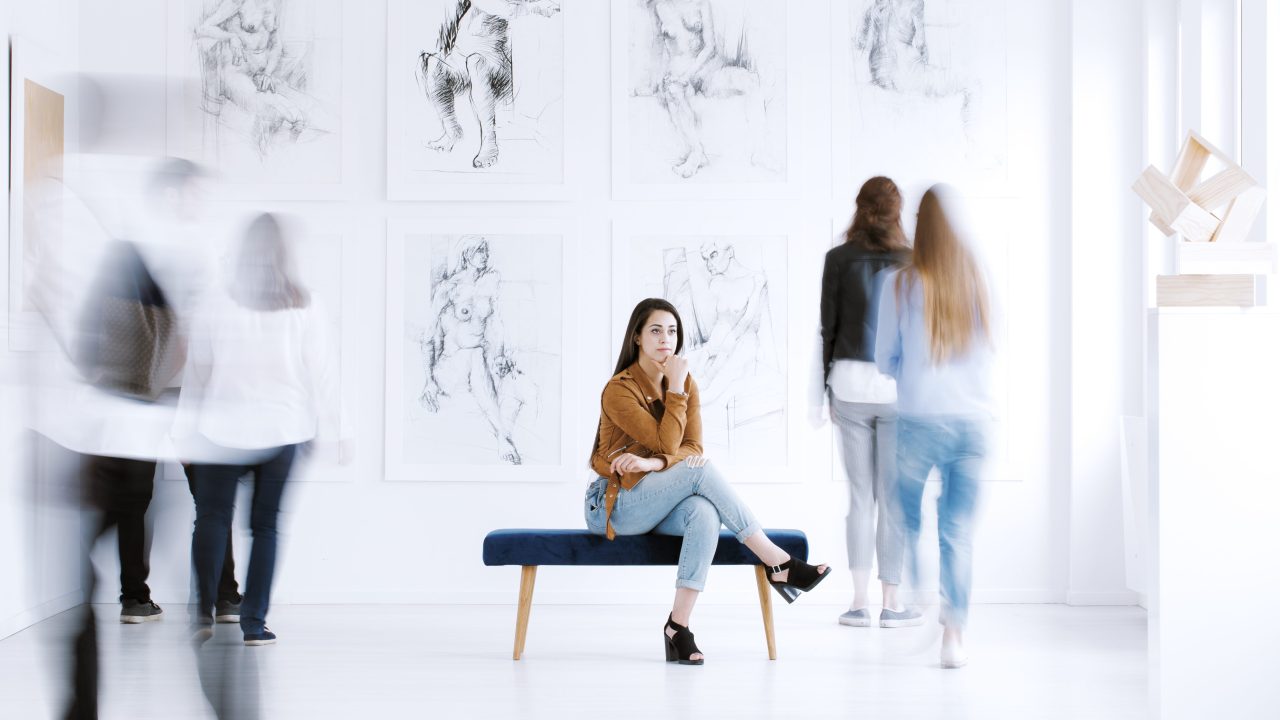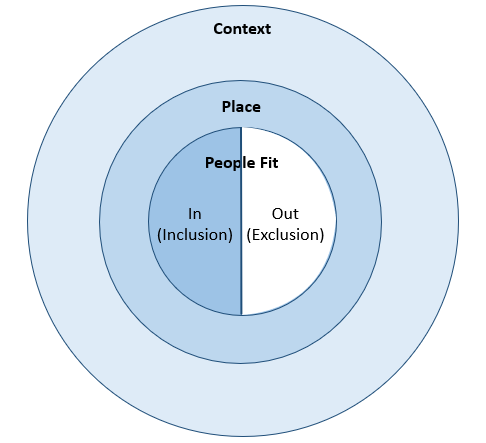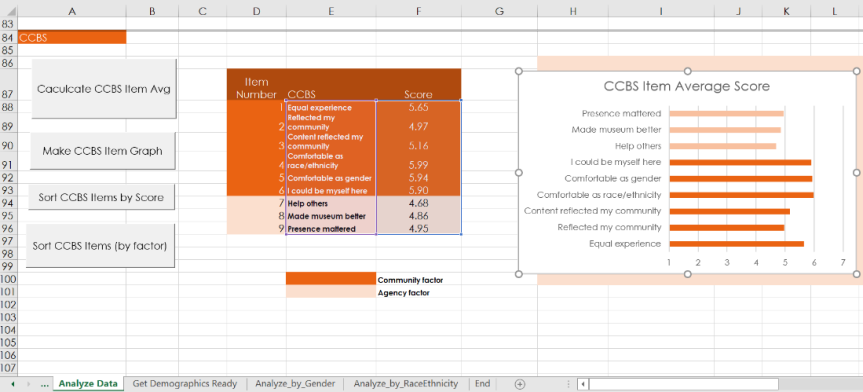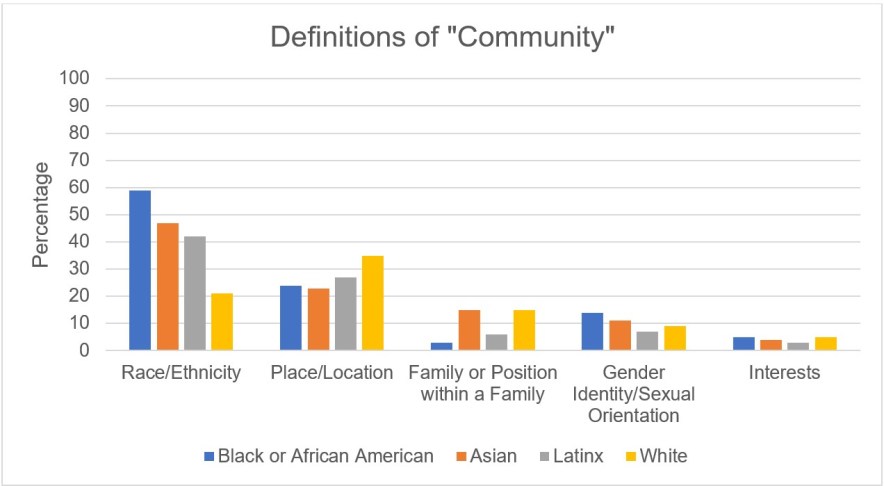
Not everyone wants to visit a museum. This is in part because of operational issues like cost, location, schedule, but these aren’t the whole story. Some don’t even reach the point of worrying about logistics, because the mere idea of visiting a museum makes no sense to them. Museums are not part of their world.
Why? Because most museums are neither built by nor for people like them, leaving them systemically and socially excluded from the museums’ cultures. One of the symptoms of this type of social exclusion is a feeling of not belonging to a place or experience. This feeling often goes underexamined in museum inclusion work, which tends to focus on staff culture and fieldwide attitudes. There has been relatively less work to date listening to guests tell us directly about their feelings and experiences, which led us to start a research project doing just that.
What is a Sense of Belonging?
A sense of belonging is often considered one of the most fundamental needs for humans to thrive (psychologist Abraham Maslow placed it only after the physical needs of food and safety in his famous hierarchy), and research on the need has a strong presence in education and human development. Still, when we began the project, we could find few empirical studies of belonging in museums and cultural institutions, despite it being recognized as essential to bringing in estranged audiences [1].

To measure and discuss belonging in our project, we needed to first define it. Through a review of the literature and interviews with museum practitioners, we put together a model of belonging for museums and cultural institutions (Figure 1). At the model’s center is the person and how they feel included or excluded in the experience (these are distinct entities, not opposites of each other). Next, on-site museum experiences happen within a space or place. Finally, the outer boundary of the model encompasses the unique context of the visit. Our paper in Curator describes this model in more detail (and is open access for all to read).
Measuring Belonging
After developing our definition of belonging, we assembled and tested an easy-to-use survey instrument to measure the four aspects of the model. We used parts of previously published surveys to measure the model’s People Fit and Place aspects. But the Context aspect is unique to museums, so we needed to develop brand-new questions for that part. We call the entire survey instrument the Cultural Institution Belonging Instrument (CIBI)[2].
The entire instrument is free to use by anyone under a Creative Commons license. You can download it, along with supporting documentation and tutorials, at this location. The goal was to make this instrument helpful to organizations without dedicated research and evaluation staff. So, we included an Excel spreadsheet that can be used to analyze the data (Figure 2). The spreadsheet is loaded with macros that will generate graphs and do elementary statistical functions at the click of a button. The toolkit was released in January 2022 and still needs additional testers. If you use it, please send us feedback on how we can improve it!

The survey takes guests about ten minutes to complete. In addition to basic demographic questions, it also has two open-ended questions. One of them is, “What community were you thinking about when you answered these questions?”. In our pilot data, we were blown away by the differences in those responses across demographic and cultural backgrounds. For example, guests who identified as Black or African American, Asian, or Latinx were twice as likely to think of their community in terms of race/ethnicity than white guests, who tended to think about it in terms of their location or place of being (Figure 3).

Next Steps
With funding from IMLS, we are conducting three follow-up studies in 2022-2023. The first deployed the survey at eight science and art museums of various sizes, programming and content strategies, audience types, etc. to examine differences between them. It also includes a cohort of guests who have never visited a museum. That data is being analyzed right now. The second study will do a cross-cultural validation to see how different cultural groups respond to the survey and what it means to them. The last study will develop a version of the survey age-appropriate for pre-teen and adolescent youth. Results of all studies will be published in open-access articles for everyone to read. We are always open to new ideas and forms of collaboration as well. As an early step in researching systemic social exclusion in our field, we hope this survey will help museums learn more about their audiences and how they feel they belong—or don’t.
Gone are the days of victim-blaming, when even the French sociologist and museum advocate Pierre Bourdieu said, “Only those who exclude themselves are ever excluded.”[3] Museums must take ownership of their own lack of initiative in expanding their audiences. And that starts with listening.
[1] Bonnici, S. (2019, November 22). Belonging: Co-creating welcoming and equitable museums [Blog post]. Retrieved from https://www.aam-us.org/2019/11/22/belonging-co-creating-welcoming-and-equitable-museums/
Daenekindt, S. (2019). Out of tune. How people understand social exclusion at concerts. Poetics, 74, 101341.
[2] More details including validation and psychometrics are in the following paper, which is free to download here:
Price, C. A. & Applebaum, L. (2021). Measuring welcoming and a sense of belonging in museums. Curator: The Museum Journal, 65(1). doi: 10.1111/cura.12454
[3] (p. 37) Bourdieu, P., Darbel, A., Schnapper, D., Beattie, C., & Merriman, 1991 cited by Daenekindt, 2019.








Hi Aaron and Lauren. Thank you for sharing such essential (free) tools and discoveries. The difference in community belonging perceptions you mention in the article is so crucial for museums to be more community-based organizations. Also in the way they may start a conversation. Because what means to be part of the community for Black or African American, Asian, or Latinx is to be considered as a part of their cultural identity and stories while for white guests is to be part (hence act on) of the place they belong. The key point is how a Museum can achieve to be a relevant part of their sense of belonging. In other words how a Museum can be one of the elements that they keep in mind when they answer the question: What is your belonging? And they think I belong to… also because this Museum provides me a sense of it. And that leads me to another crucial question: Museums should find their own sense of belonging in their communities. Only in this way, they will be well-rooted, resilient, and sustainable.
Just a couple questions:
Was this survey done in an area where there was minimal to no Native American representation? Most surveys don’t include this audience.
When surveys like this are done, I agree with Jose, in that to maintain resilience, the museum must create an inclusivity by identifying culturally, who their audience is.
Museums have a long standing history of “speaking” for other cultures which is not their own. How will you make a Native person comfortable and grounded in a museum that has continually created stories that do not tell the truth and creates a commodification of their culture.
As a Native American museum professional, our path of inclusion in these institutions has just begun.